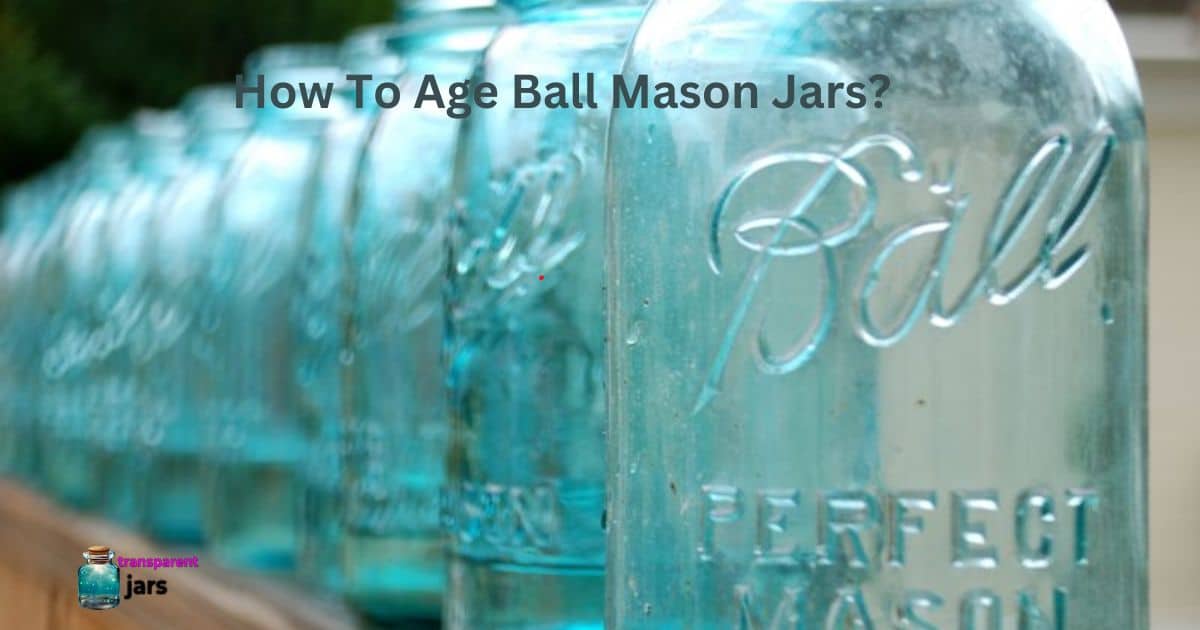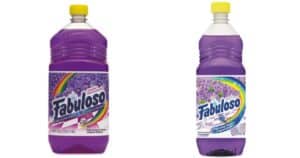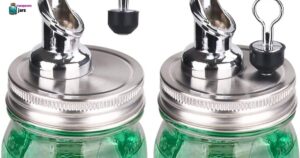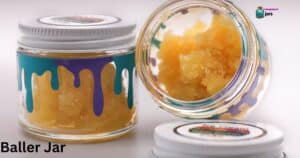Ball Mason jars are timeless kitchen staples. While they serve many purposes, some prefer a vintage look for aesthetic appeal. Aging them gives a rustic charm, perfect for home decor or special occasions.
Ever wondered how those old, rustic Mason jars got their aged charm? Dive into the art of aging Ball Mason jars and transform your ordinary kitchenware into vintage treasures. Ball Mason jars have been around for ages, symbolizing home preservation and vintage charm.
Aging these jars can elevate their appearance, making them not just containers, but pieces of art that tell a story. In this guide, we’ll walk you through the steps to achieve that timeless, aged look effortlessly.
The Appeal Of An Aged Mason Jars
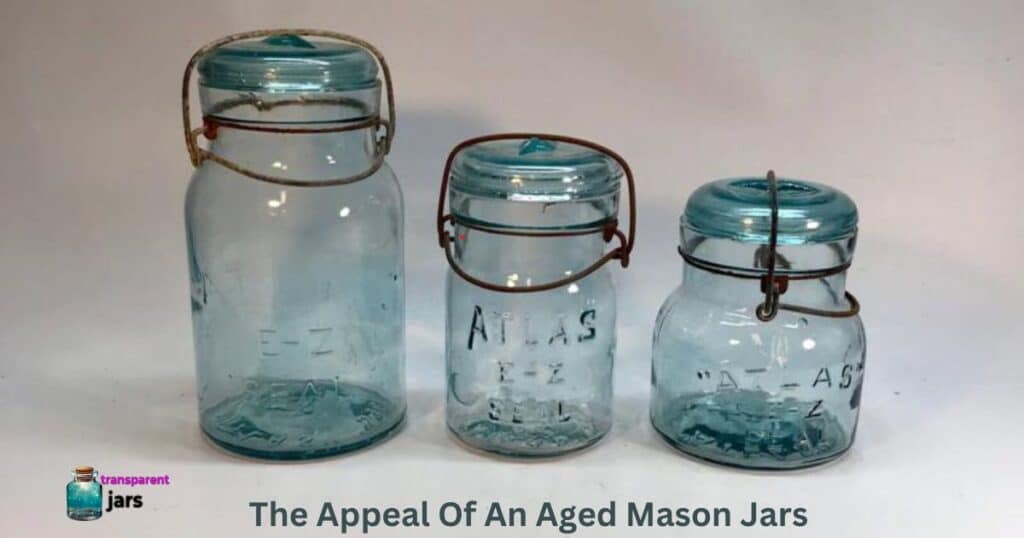
Mason jars, particularly Ball’s range, have been in production since the 19th century. Their design, characterized by clear glass and a distinct logo, exudes a classic charm. By aging these jars, one can tap into this historical aura, evoking memories of bygone eras. Whether you’re aiming for a rustic farmhouse decor or a quaint vintage setup, aged Ball Mason jars can be the centerpiece that ties it all together.
Why Age Your Ball Mason Jars?
- Enhanced Aesthetics: An aged look can transform a simple jar into a captivating decor piece.
- Personal Touch: Customizing jars allows for unique designs, making them perfect for gifts or personal collections.
- Environmental Impact: Aging and reusing jars is a sustainable practice, reducing waste and promoting eco-friendly habits.
Methods To Age Ball Mason Jars
There are various techniques to age Mason jars. The method you choose will depend on the desired outcome, the materials at hand, and personal preference. Below are some tried-and-true methods:
1. Distressing The Surface
- Materials Needed: Sandpaper (medium and fine grit), water, sponge.
- Procedure:
- Start by cleaning the jar to remove any dirt or residue.
- Use the medium-grit sandpaper to gently rub the exterior of the jar in circular motions. Focus on areas that would naturally wear out over time.
- Switch to the fine-grit sandpaper for a smoother finish.
- Wipe off any dust with a damp sponge.
2. Staining The Glass
- Materials Needed: Coffee grounds, vinegar, water, bowl.
- Procedure:
- Create a mixture using equal parts of coffee grounds, vinegar, and water.
- Submerge the jar in the mixture, ensuring it’s fully covered.
- Let it soak for several hours or overnight, depending on how deep you want the stain.
- Remove the jar and allow it to dry. The longer you let it soak, the darker the stain will be.
3. Adding Rustic Elements
- Materials Needed: Twine, burlap, old lace, hot glue gun.
- Procedure:
- Wrap twine, burlap, or lace around the neck or body of the jar, securing it with hot glue as you go.
- For a more rustic feel, you can add dried flowers, wooden beads, or small charms.
- Ensure all elements are securely attached, and trim any excess material.
4. Using Aging Solutions
Several commercial solutions are designed explicitly for aging glass and metal. These solutions can be sprayed or brushed onto the jar, creating an authentic aged look. Always follow the manufacturer’s instructions and ensure proper ventilation when using these products.
Maintaining Your Aged Ball Mason Jars
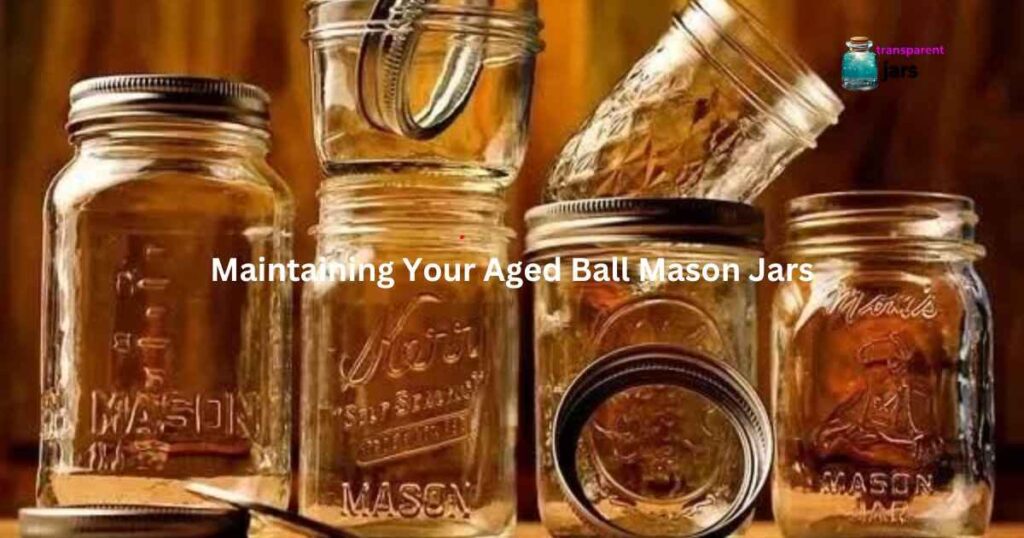
Once you have achieved the desired aged appearance, it is essential to maintain it to ensure longevity. Here are some tips:
- Avoid Harsh Cleaners: Stick to mild soaps and avoid abrasive cleaners that can strip away the aged finish.
- Handle with Care: While aged jars are durable, they are not immune to chipping or breakage. Always handle them with care.
- Store in a Cool, Dry Place: Prolonged exposure to sunlight or extreme temperatures can fade or damage the aged finish. Store your jars in a cool, dry place away from direct sunlight.
What Ball Mason Jars Are Worth Money?
Certain vintage Ball Mason jars can be valuable to collectors, especially those with unique characteristics or historical significance. Here are some factors that can make a Ball Mason jar worth money:
- Age: Older jars, especially those produced before 1910, tend to be more valuable due to their rarity.
- Color: Some colors, like the deep cobalt blue or amber, are rarer and can fetch higher prices.
- Sealing Method: Jars with unusual sealing methods, like the wire bail closure, can be more valuable.
- Embossing: Jars with embossed logos, dates, or patterns can be sought after by collectors.
- Condition: Jars in mint or near-mint condition, without chips or cracks, are generally more valuable.
- Limited Editions: Special editions or commemorative jars released for specific events or anniversaries can have higher worth.
It’s always a good idea to consult with a specialized collector or utilize resources dedicated to vintage jar appraisal to get an accurate assessment of a jar’s value.
What Do The Numbers On The Bottom Of A Ball Mason Jar Mean?
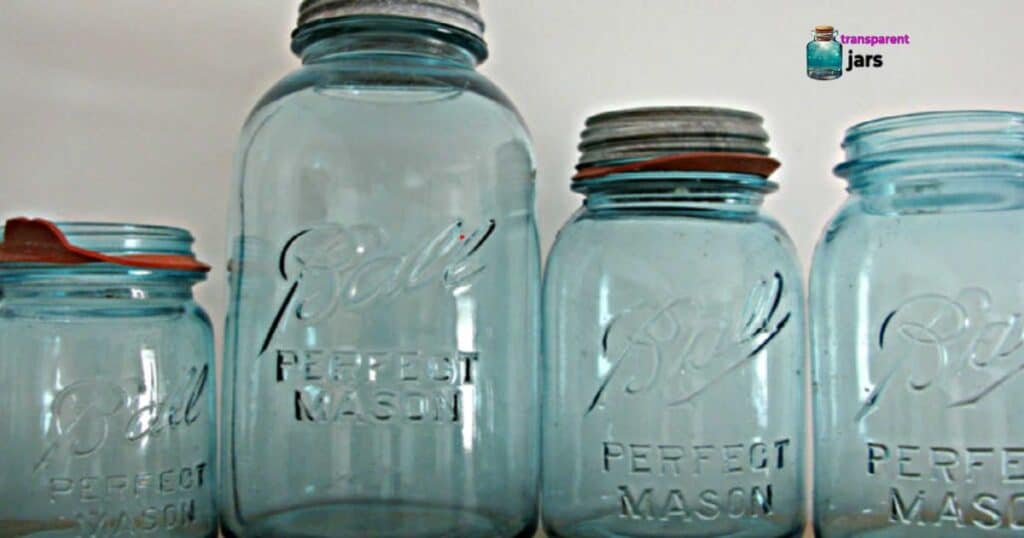
The numbers on the bottom of a Ball Mason jar typically indicate the mold number used in the manufacturing process. These numbers are part of the jar’s identification system, helping to trace its origin and production details. While they may vary depending on the specific jar type and production batch, they primarily serve as internal references for quality control and historical tracking purposes by the manufacturer.
FAQ’s
How do you date a long life mason jar?
Typically, the L G W mark from Laurens appears alongside numbers like “6 L G W 1”, indicating the bottle was produced in 1961.
What is the lifespan of a mason jar?
Canning jars typically last 10 to 13 years. Breakage increases after this period due to wear and tear from regular use. Exposure to heat and usage cause stress on the jars.
Why are ball jars blue?
The blue mason jars, made until 1937, used Lake Michigan sand, which imparted their distinctive blue color.
Are Mason jars and Kilner jars the same?
The Kilner preserve jar, widely imitated globally, resembles the renowned Mason Jar. It’s apt for water bath and pressure canning, and is dishwasher-friendly. Replacement 70mm lids and bands for Kilner jars are accessible.
Are mason jars still trendy?
Indeed, many still choose mason jars for drinking. Known for their strength and adaptability, they serve multiple purposes from storage to crafts. They’re also favorites for outdoor events like picnics and camping.
Final Thoughts
How to age ball mason jars? Aging Ball Mason jars can be a rewarding and creative endeavor. By following the methods outlined in this guide, you can transform ordinary jars into captivating vintage pieces that add character to any space. Whether you’re a seasoned DIY enthusiast or embarking on your first project, aging Mason jars offers a blend of nostalgia, creativity, and sustainability. Embrace the journey, and let your creativity shine!

